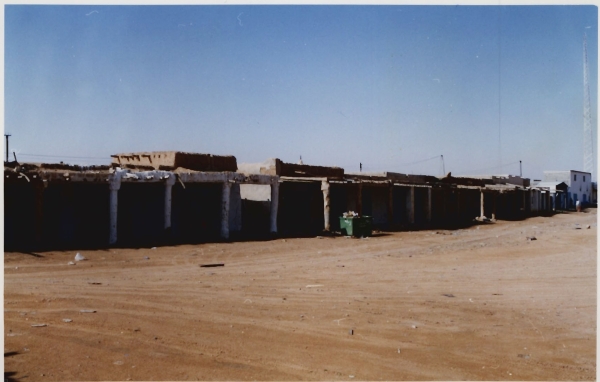



Traditional Architecture in Northern Borders Province is defined by distinctive building patterns in its traditional structures. These buildings are characterized by unique shapes, construction methods, and materials, which highlight the province’s cultural identity. The design utilizes local natural resources and incorporates aesthetic elements that align with the living conditions of the inhabitants and the characteristics of the area.
Urban heritage sites in Northern Borders Province
Urban heritage refers to all human-made structures, including cities, villages, neighborhoods, and various buildings, as well as empty spaces, facilities, and artifacts that hold urban, historical, cultural, or national significance. The Northern Borders Province is home to approximately thirty-nine urban heritage assets, each exhibiting diverse architectural styles and rich heritage components. In Rafha Governorate, there are fifteen urban heritage sites, such as the King Abdulaziz Historical Palace in Linah Center, Linah Heritage Village, its folk market, and its historic mosques.
Ar'ar City features eight urban heritage sites, including 'Umm Khinsir Historical Village,' while Turayf Governorate has eight heritage sites as well, including 'al-Qarou Heritage Site,' Turayf's customs facility, and the old airport. Additionally, al-Uwayqilah Governorate contains eight heritage urban sites, such as the 'Old Market' in ad-Duwaid and 'ad-Duwaid' Mosque.
Raw materials used in traditional architecture in Northern Borders Province
Traditional architecture in Northern Borders Province relies on several elements, including building materials sourced from the local environment. Prominent among these materials is mud, often combined with other materials, such as hay, for reinforcement. Additionally, wood from palm or tamarisk trunks—though not abundant in the province and instead sourced from Hail Province—was used to construct house ceilings, doors, and windows.
Characteristics of traditional architecture in Northern Borders Province
Builders in Northern Borders Province did not plan schemes for house construction. The houses had simple designs, with the size, number of rooms, construction materials, and adornments determined by the household's social and financial status. The conservative environment also influenced the size of windows, the fencing of courtyards, and the design of a separate space for women, distanced from the guests' area.
Residents of the province were keen on decorating their houses with gypsum ornaments, particularly features known as 'al-Wjar' or 'al-Kimar,' which adorned the guest meeting room where coffee utensils were displayed. They were also enthusiastic about embellishing wooden doors, often painting them in vibrant colors.
Traditional architectural buildings in Northern Borders Province
Among the structures that reflect the traditional architectural patterns in Northern Borders Province is the Linah Village Market, located 105 km south of the Rafha Governorate and covering an area of five thousand m². It is one of the historically significant markets within the province. The market, established in 1933, features eighty warehouse shops, known as 'as-Sababit,' which sell foodstuffs imported from neighboring countries. The market was built from mud, while its awnings were made of palm fronds supported by pillars.
Linah Village is also home to King Abdulaziz Palace, constructed in 1935 after the unification of the Kingdom. The palace spans 4,320 m² and is built from mud, adobe, and stones. Its walls feature four large round towers at the corners, designed for surveillance and guarding, along with a large wooden gate. The palace includes living quarters, hospitality rooms, and a mosque roofed with palm fronds, in addition to a well that existed before its construction. It also contains a horse stable and a spacious courtyard overlooked by the rooms.
King Abdulaziz Palace in Linah has a squared geometrical shape, appearing as a miniature model of the historic al-Masmak Palace in Riyadh City. Linah Palace reflects the Najdi architectural style found in historical palaces across Riyadh Province.
Another important historical structure in Northern Borders Province is the Old Emirate Palace in Ar'ar City, established in 1954. This single-story palace is designed in an arched shape and covers an area of 1,485 m². It was constructed skillfully from knapped stone sourced from the mountains south of the city.
The palace underwent a comprehensive restoration process, both internally and externally, that preserved its original design. It features several offices for governorate employees, as well as reception halls for families and visitors. The palace also includes an inner courtyard, which covers an area of 528 m² in the western section. At the front, there is a facade with a gate that leads to a main hall used for receptions. In the southern area, the palace boasts a meeting hall that is connected to a dining hall, while the northern section contains several rooms.
Additionally, the historic Umm Khinsir Village, situated sixty-six km to the east of Ar'ar City, showcases the traditional architectural style of Northern Borders Province. Located on the international highway connecting Ar'ar with Rafha, Umm Khinsir is the oldest archaeological village among its neighbors in the region.
Related quizzes

